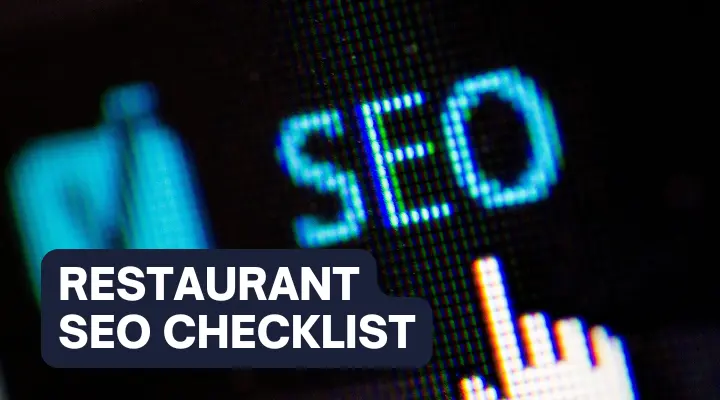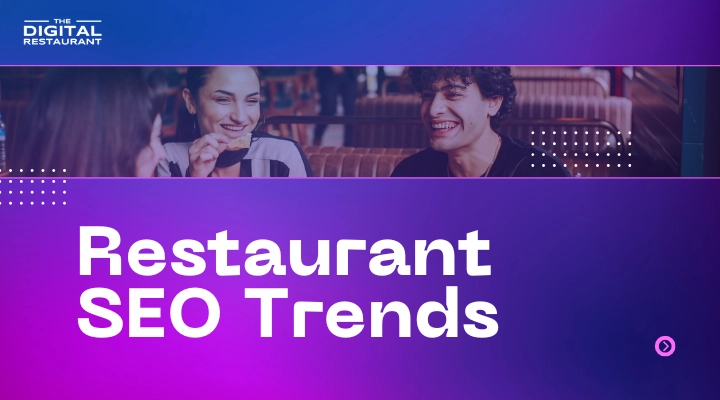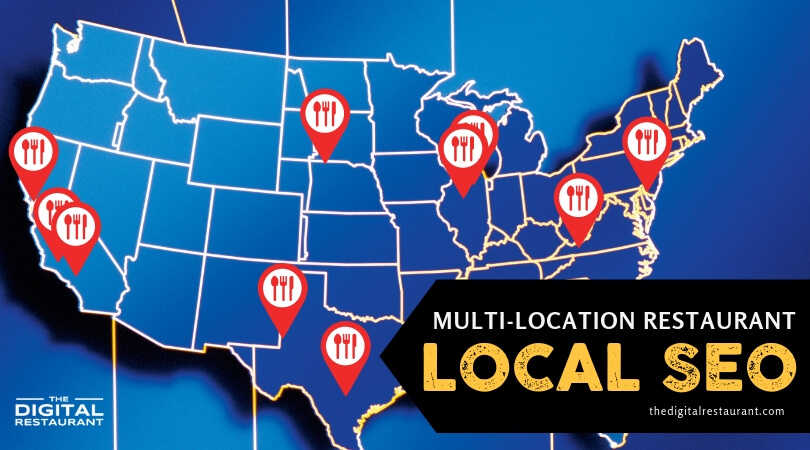As we move into 2025, restaurant SEO is evolving with two major trends: AI-powered search and voice search optimization. With changing customer behaviors, a strong SEO strategy is no longer optional—it’s essential for ranking higher on Google and attracting more customers.
Many restaurant owners overlook SEO, limiting their online visibility. While this might not be an issue in less competitive markets, it’s a major disadvantage for restaurants in bustling areas like downtown Chicago or LA.
So today we are going to look at a comprehensive checklist that you can use to make sure your restaurant’s SEO allows you to rank as well as possible.
Pre-Launch SEO Checklist (for new restaurants)
Don’t wait until opening day to think about SEO! The moment you secure your restaurant’s location, start optimizing for search engines to ensure you rank quickly and attract hungry customers from day one.

These are the critical steps at pre-launch:
- Register Google Business Profile (GBP) before opening.
- Build a mobile-friendly website with speed-optimized menus, and seeding local citations on directories like Yelp and Tripadvisor.
- Set up tracking on Google Analytics and Google Search Console: By setting up tracking tools and blocking search engines until launch, you’ll avoid indexing errors while building anticipation with teaser content. Restaurants that execute this pre-launch strategy often dominate local rankings faster—because Google rewards early signals of legitimacy.
To help you stay ahead, we’ve created the Restaurant SEO checklist to optimize your restaurant’s website. If you’d prefer expert assistance, consider our Advanced SEO Service at The Digital Restaurant.
Restaurant SEO Checklist
Are you ready to sort out your website’s SEO? Sit down, set aside a couple of hours, and let’s get your SEO sorted in these simple steps.
Table of contents:
- Local SEO & Google Business Profile (GBP) Optimization
- Choose Primary & Related Keywords
- Page Title
- Meta description
- Optimize URLs
- Optimize Heading Tags (H1, H2, H3)
- Check Keyword Density
- Add Clear Calls-to-Action (CTAs)
- Add Internal Links
- Optimize Images
- Check Page Speed
- Technical SEO Fixes for Restaurants
- Content & UX Enhancements
- Conversion Optimization
1. Local SEO & Google Business Profile (GBP) Optimization
(Critical for restaurants since most searches are local!)
- Ensure GBP is claimed & fully optimized (hours, menu link, attributes like “outdoor seating”).
- Add high-quality photos (food, interior, team) and update regularly.
- Encourage & respond to reviews (improves rankings & trust).
- Use local keywords in titles/descriptions (e.g., “Best Pizza in [City]”).
2. Choose Primary & Related Keywords
For each website page, you’ll need to identify a primary keyword to target. You can also target a secondary related keywords that is closely related to your primary keyword.
What method do you use to locate these keywords? Google Keyword Planner, KeywordTool.io, Ahrefs, Moz, SEMRush, and Ubersuggest are just a few examples of online tools. Alternatively, you can use NGAZE Platform for keyword research.
Let’s take a look at an example using a pizzeria in Chicago. Here’s how we would pair keywords with the pages of their website.
| Primary/ Related Keywords | Web page |
| pizza chicago /deep dish pizza chicago | Homepage |
| pizza menu / pizza menu specials | Menu page |
| pizza specials / pizza deals | Specials page |
| order pizza online / pizza delivery | Order page |
| restaurant reservations (near me) / dinner reservations | Reservations page |
| pizza catering (near me) / pizza catering deals | Catering page |
| banquet halls (near me) | Banquet page |
| pizza rewards | Rewards |
| deep dish pizza (near me) | About |
| Additional keyword | Contact page |
3. Optimize Page Titles
You’ll need to optimize your page’s title after you’ve associated each page with a primary and possibly secondary keyword.
The primary keyword should be first in the title of each page, followed by the secondary keyword (if relevant) and separated by pipes (|).
Your company name should only appear on the homepage and your contact page.
The title of each page should be no more than 70 characters long. So be it if that means only having one term in the title.
Finally, make certain that each page title is unique.
- Place the primary keyword first, followed by a secondary keyword (if applicable).
- Use pipes (|) to separate keywords.
- Keep titles under 70 characters.
- Include your restaurant name only on the homepage & contact page.
- Ensure each title is unique.
Example:
✅ “Pizza Chicago | Deep Dish Pizza & Italian Cuisine”
4. Optimize Meta Descriptions
After we’ve optimized the page titles, we’ll need to focus on the other piece of metadata that users will see in Google: the meta description of your page. This is the brief description that appears at the bottom of each Google page. These can be a little longer—maximum of 160 characters—but they should still be concise and to the point.
Make sure your keyword or phrase is included in the description, but most importantly, make it appealing. It must entice people to visit your website.
- Keep descriptions under 160 characters.
- Include your target keyword naturally.
- Write compelling copy to increase click-through rates.
Example:
✅ “Craving authentic deep-dish pizza in Chicago? Order online now for the best Chicago-style pizza delivery!”
5. Optimize URLs
With this step, there comes a word of caution. We do not advise changing your current URLs. This is more likely to have a negative impact on your rankings than a favorable one.
Keep in mind the following points when creating future URLs: keep them brief, include the keywords, and separate each word with a hyphen (-).
- Keep URLs short and keyword-rich.
- Use hyphens (–) between words.
- Avoid changing existing URLs (can hurt rankings).
Example:
✅ yourrestaurant.com/pizza-menu
6. Optimize Heading Tags (H1, H2, H3)
We’ve almost reached the halfway point. The header tags on your page come next. Only one H1 tag should be used on each page of your website. This is the page title for most WordPress pages. The H1 element should include (as close to the front as possible) your keyword and appropriately describe your page.
- Use only one H1 tag per page (usually the page title).
- Include keywords naturally in H2 and H3 subheadings.
7. Check Keyword Density
Some people try to cram their keywords into the content of their pages. This must not be done! Use your keyword a handful of times naturally throughout your material, but no more than that.
If you believe you are overusing a keyword, don’t be afraid to reduce it if possible.
- Avoid keyword stuffing—use keywords naturally.
- Aim for 1-2% keyword density (a few mentions per page).
8. Add Clear Calls-to-Action (CTAs)
Here, we are going to make sure that there is a call to action on every page above the fold. What this means is that there is a command for a user to take that they can see without scrolling.
In most cases, this will be “order online”, but it could be “reserve a table”, or “place an order by phone”.
- Place CTAs above the fold (visible without scrolling).
- Examples: “Order Online,” “Reserve a Table,” “Call Now.”
9. Add Internal Links
For each page on your website, look for opportunities in the content where you can link out to the other pages of your website. So on your menu page, you can link to your online ordering page, on your online ordering page you can link back to your menu page. You should have links to all of your major pages on your homepage.
When you create the internal links, make sure that the part of the sentence that you link to contains the keyword of the destination page.
- Link to other relevant pages (e.g., menu → online ordering).
- Use keyword-rich anchor text.
10. Optimize Images
Your images should be optimized for your primary keyword, too. On each page make sure that the main image on the page has an alt tag which contains that page’s keyword.
The title of the image should also contain the keyword (it can be the same as the alt tag) and the image should be as small as possible without sacrificing quality.
- Use descriptive file names (e.g., deep-dish-pizza-chicago.jpg).
- Add alt text with keywords.
- Compress images for faster loading.
11. Check Page Speed
Check each page with Google’s PageSpeed Insights Tool. It will tell you just how well your page is optimized and exactly what you can do to improve it.
- Use Google PageSpeed Insights to test performance.
- Optimize images, enable caching, and minimize code.
12. Technical SEO Fixes for Restaurants
- Fix duplicate menu pages (common issue if PDF menus are indexed).
- Optimize image compression (large images slow down pages).
- Implement breadcrumbs (helps Google understand site structure).
- Check for broken links (especially in menus, reservations, contact pages).
13. Content & UX Enhancements
- Add a FAQ section (targets voice search queries like “Does [Restaurant] have vegan options?”).
- Embed a Google Map (improves local relevance).
- Improve internal linking (e.g., link menu items to blog posts like “Best Italian Dishes in [City]”).
- Add schema markup for menus (
RecipeorMenuschema).
14. Conversion Optimization
- Ensure click-to-call & reservation buttons are prominent.
- Add a “Order Online” or “View Menu” CTA above the fold.
- Test mobile speed (Google’s Core Web Vitals impact rankings).
Ongoing SEO Maintenance (For Long-Term Restaurant Success)
SEO isn’t a one-time task—it’s a continuous process that keeps your restaurant visible, competitive, and ahead of local rivals.

These steps ensures your rankings don’t slip and your online presence stays fresh:
Monthly Tasks
- Update Google Business Profile (GBP) – Refresh photos (seasonal dishes, events), adjust holiday hours, and post monthly offers (e.g., “Sunday Brunch Special”).
- Monitor & Respond to Reviews – Aim for 5-star responses (even to negative feedback) to boost reputation and SEO.
- Check Local Rankings – Track keywords like “[Cuisine] near me” and adjust content if rankings drop.
Quarterly Tasks
- Refresh Website Content – Add seasonal menu items, blog posts (e.g., “Best Fall Cocktails in [City]”), and update metadata.
- Audit Technical SEO – Fix broken links, optimize image sizes, and test mobile speed.
- Analyze Competitors – Spy on rival restaurants’ GBP updates, backlinks, and new keywords.
Biannual/Annual Tasks
- Renew Schema Markup – Ensure menu prices, hours, and events are up to date in structured data.
- Deep-Clean Citations – Verify NAP (Name, Address, Phone) consistency on all directories.
- Reevaluate Keywords – Shift focus if search trends change (e.g., more “vegan options” searches).
Pro Tip: Set Google Alerts for your restaurant name to catch unlinked mentions (and turn them into backlinks!).
Restaurants that neglect ongoing SEO lose 20-30% of traffic within 6 months. Consistent updates signal to Google that your business is active and relevant, helping you outrank stagnant competitors.
Maximize Restaurant SEO with The Digital Restaurant
If you really want to maximize SEO for your restaurant’s website, it’s time to reach out to The Digital Restaurant. You won’t just get access to the NGAZE restaurant marketing tool, you’ll also be able to reach out to us for help and commission us to do the work for you. Can’t wait to get started, get in touch today.
If managing SEO feels overwhelming, let our experts handle it! With NGAZE AI marketing tools and our Advanced SEO Service, we’ll help your restaurant rank higher and attract more customers.
Next Steps:
- Schedule a free 30-minute consultation with one of our marketing experts to develop a customized marketing strategy for your restaurant.
Don’t let your competitors claim a bigger slice of the market. Take action today and watch your restaurant’s success soar!






Leave a Reply